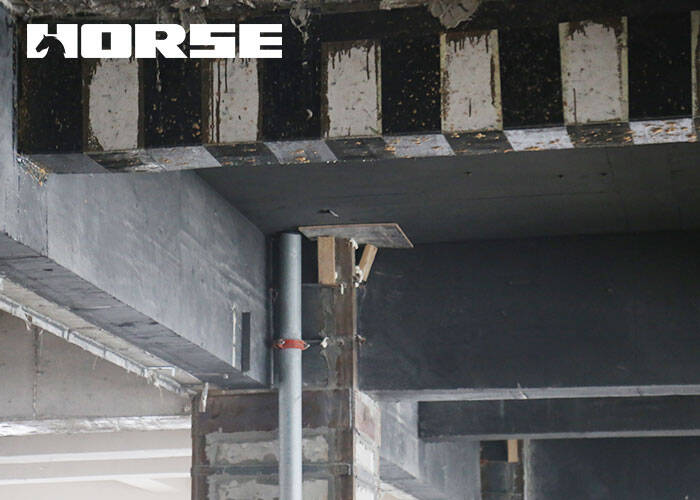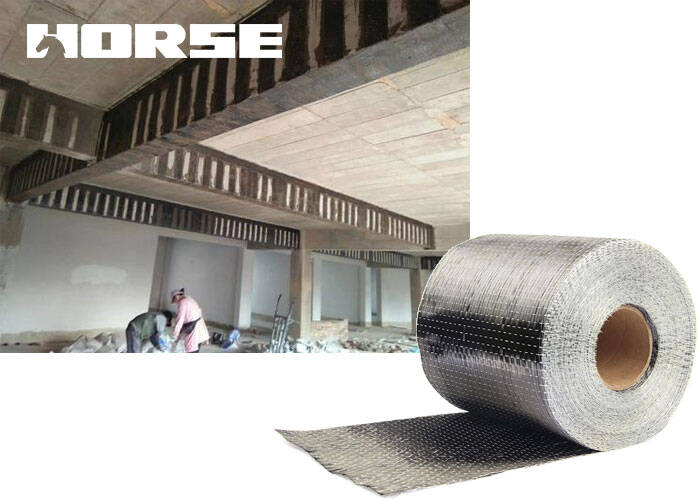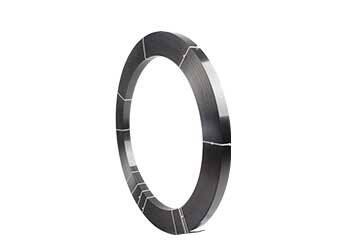Solutions
Horse Construction offers full range of structural strengthening materials with technical supports, documentation supports, products supports, project supports.
How Do You Strengthen Concrete?

Due to the constant changes of load and environment, the durability of concrete columns is often reduced, and the strength or stiffness is insufficient. As the main load-bearing structure of buildings, it is necessary to reinforce the defective columns. There are many methods to strengthen concrete, among which the five commonly used methods are increasing section reinforcement, externally bonded reinforcement, bonded reinforcement, carbon fiber sheet reinforcement, and wrapped wire reinforcement.
1. Add column section reinforcement method
The reinforcement method of increasing column section is a reinforcement method for columns, which is based on the stress condition of the column and encloses concrete on one side, two sides or around the concrete column, so as to improve the bearing capacity, strength and stiffness of the column.
In concrete reinforcement, the method of adding section is especially suitable for the case of small section and insufficient bearing capacity of columns. In order to achieve the best reinforcement effect of the method of increasing section in concrete, it must be ensured that the strength grade of concrete base material is not lower than C13, and the reinforcement used for concrete reinforcement is not less than 14mm. At the same time, concrete columns with different types, section forms and stress conditions need to adopt different structural forms.
Advantages: simple construction technology, strong adaptability, and long-term use experience;
Disadvantages: the construction wet operation takes a long time, and the concrete curing needs to limit the load. After reinforcement, the structure weight increases, and the building space decreases.
2. Carbon fiber cloth reinforcement method
CFRP is suitable for strengthening axially compressed concrete columns, eccentrically compressed columns and columns with insufficient ductility. The bearing capacity and ductility of the normal section of the concrete column can be improved by circumferential hoop, that is, continuous circumferential non spacing hoop; Carbon fiber cloth can also be pasted into a ring hoop to improve the bearing capacity of the inclined section of the concrete column.
The carbon fiber cloth reinforcement shall ensure that the strength of the base material is not less than C15, the tensile bond strength is not less than 1.5 mpa, and the lap length of the carbon fiber cloth in the ring belt is not less than 50 mm.
Advantages: light weight, high strength, no need to overlap generally, can adapt to the surface shape requirements of concrete paste, corrosion resistance, moisture resistance, and convenient construction;
Disadvantages: The operating environment temperature is limited, and special protective treatment is required. If the protection is improper, fire and artificial damage may occur.

3. Winding method
To improve the ductility of concrete columns, steel wire winding method is often used for reinforcement. The reinforcement principle of winding steel wire reinforcement method is a direct reinforcement method to improve the bearing capacity and ductility of concrete members by winding annealed steel wire to restrain concrete members.
If the column section is square, the ratio of the size of the long side to the size of the short side should not be greater than 1.5. The four corners of the column should be passivated, and the diameter of the fillet should not be less than 30mm. This method has the same charm as the above bonded carbon fiber sheet strengthening method, and is a strengthening method to improve the ductility of members.
4. Reinforcement outside the column
The reinforcement method of steel encased column is a reinforcement method that the section steel is attached to the two or four corners of the concrete column, and the angle steel is welded on the flat steel hoop to improve its stiffness and mechanical properties. It is widely used in strengthening frame columns.
There are two strengthening methods: dry method and wet method. Dry reinforcement means that there is no connection between the angle steel and the original column, or the cement mortar cannot ensure the effective transmission of shear on the joint surface, and the deformation between the angle steel and the column is difficult to coordinate. Wet consolidation is to use latex cement, polymer mortar or epoxy resin chemical grouting between the angle steel and the original column, so that the steel and the column can work as a whole and bear the force jointly. The construction of dry outsourcing reinforcement is simple, while the effect of wet outsourcing reinforcement on improving bearing capacity is obvious, so the wet outsourcing reinforcement has been widely used in practice.
5. Reinforcement method
In the reinforcement method of concrete column, angle steel and steel plate are attached to the column. While increasing the section to improve the bearing capacity of the column, the original concrete column has a good three-dimensional stress state due to the lateral restraint of the new steel plate hoop. Therefore, the bearing capacity and deformation resistance of the column can be greatly improved.
Advantages: The bearing capacity of the column is greatly improved under the condition of small increase of the column section area.
You can find anything here you are in need of, have a trust trying on these products, you will find the big difference after that.

Two-component epoxy modified epoxy structural strengthening adhesive for bonded steel plate to concrete

High strength, unidirectional carbon fiber sheet pre-saturated to form a carbon fiber reinforced polymer (CFRP) sheet used to strengthen structural concrete elements.

High strength carbon fiber reinforced polymer(CFRP) plate for structural strengthening and concrete repair